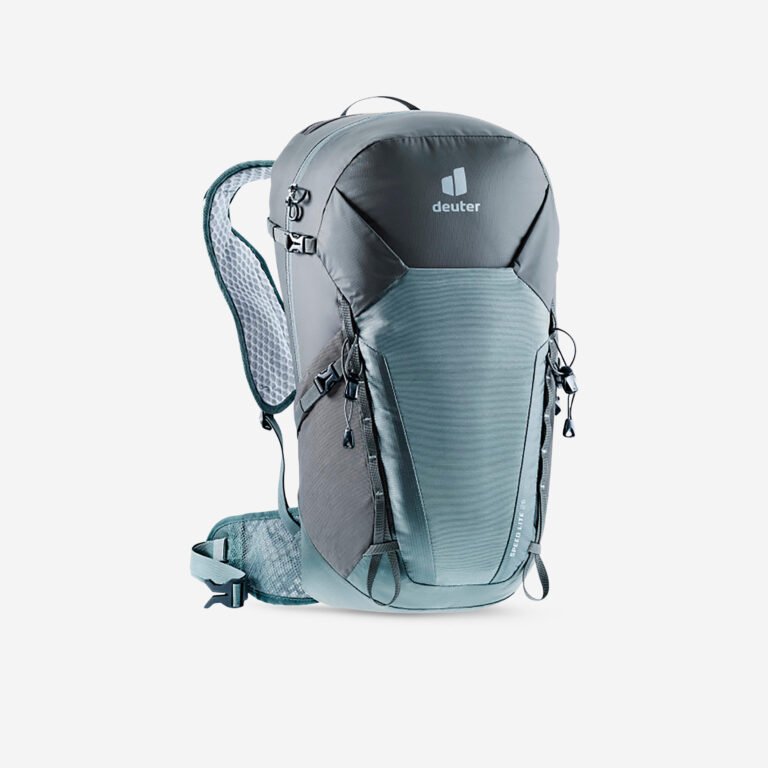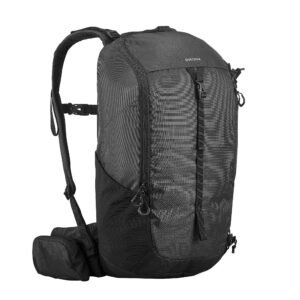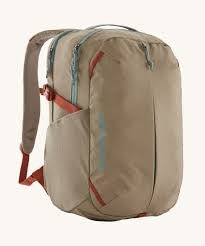Backpacks
probably the most important part
Best backpacks for hiking 2024
Selecting the perfect backpack can make a world of difference in your hiking, travel, or daily commuting experience. With so many options available, it can be overwhelming to decide which one best suits your needs. In this page, we’ll explore key factors to consider when choosing the right backpack, ensuring you find a pack that’s comfortable, functional, and durable. We’ll also delve into practical tips, expert recommendations, and essential features that can enhance your overall backpacking experience.
Best daypacks 2024
Our teams top picks
- Best overall daypack: Deuter Speed Lite 25
- Best budget daypack: Decathlon Quechua MH100 20L
- Best commuter daypack: Patagonia Refugio 26L Pack
- Best hybrid running pack: Arc’teryx Aerios 18
- Most technical day pack: Black Diamond Pursuit 15
- Best women’s daypack: Osprey Tempest Pro 20
- Personal favourite: Lowe Alpine airzone active 18
1.Deuter Speed Lite 25
Category: Daypack
Capacity: 25 litres
weight: 710g
material: Ultra-lightweight 140D REC PA RS material
fit: Various body types with adjustable straps
What we like: Comfort, ventilation, materials
What we don’t: No rain cover, basic hydration compatability

The Deuter Speed Lite 25 is an excellent choice for those seeking a lightweight, versatile daypack that performs well across various outdoor activities. Its compact design, combined with its comfort and durability, makes it a go-to pack for both casual hikers and more serious adventurers.
2,Decathlon Quechua MH100 20L
Category: Hiking Backpack
Capacity: 20 litres
weight: Approximately 760g
material: 100% polyester, no frame
fit: Various body types with adjustable straps
What we like: Comfort, pockets, ease of use
What we don’t: Capacity, no rain cover

The Decathlon Quechua MH100 20L backpack is a reliable and versatile option for day hikes and outdoor adventures. It offers a comfortable fit, excellent ventilation, and ample storage space, all while being durable enough to withstand various hiking conditions. Its thoughtful design and features make it a great choice for hikers looking for a compact and efficient daypack.
3.Patagonia Refugio 26L Pack
Category: Daypack
Capacity: 26L
weight:735g
material: 100% recycled polyester with PU coating, recycled nylon side panels, and recycled polyester spacer mesh for the back panel and straps
fit: Adjustable shoulder and chest straps
What we like: Capacity, laptop compartment
What we don’t: No rain cover, comfort

Overall, the Patagonia Refugio 26L Pack is a reliable and functional daypack that stands out for its thoughtful design and sustainable materials. It’s an excellent choice for anyone seeking a versatile pack that can handle daily commutes and light outdoor activities. However, if you need more advanced organization, or a more supportive hip belt, you might want to explore other options.
4.Arc’teryx Aerios 18
Category: Daypack
Capacity: 18L
weight: 567g
material: 210D Hadron LCP (Liquid Crystal Polymer) fabric
fit: Various body types, adjustable chest shoulder and hip straps
What we like: Weight, comfort, Durability
What we don’t: Capacity, Price

Overall, the Aerios 18’s combination of durability, comfort, and lightweight performance makes it a standout option for those looking to move quickly and efficiently on the trail. If these strengths align with your needs, the Aerios 18 could be an excellent addition to your outdoor gear collection. However, it’s worth noting that this backpack comes with a higher price tag, reflective of its premium materials and advanced design. While the investment might be significant, the quality and performance offered by Arc’teryx can make it a worthwhile addition to your gear, especially for avid hikers and adventurers. If budget is a concern, there are other excellent options available that offer a good balance of features and cost.
5. Black Diamond Pursuit 15
Category: Daypack
Capacity: 15L
weight: 725g
material: 210D Ripstop Nylon
fit: Adjustable chest, shoulder and hip straps, available in S,M,L
What we like: Compfort, Ventilation
What we don’t: Capacity, No rain cover, price

The Black Diamond Pursuit 15 is a great choice for those needing a lightweight, durable daypack for fast-paced hikes and technical adventures. Its streamlined design and efficient features make it suitable for shorter outings where minimal gear is needed. However, for longer trips, heavier loads, or more advanced organization, you might want to consider other options.
6.Osprey Tempest Pro 20
Category: Daypack
Capacity: 20L
weight: 960g
material: 210D recycled nylon with a double-ripstop grid
fit: Adjustable chest, shoulder, hip straps
What we like: Durability, comfort, hydration compatibility
What we don’t: No rain cover, price

The Osprey Tempest Pro 20 is a top-notch daypack for those seeking durability, comfort, and efficient organization for their outdoor adventures. Its lightweight design and versatile features make it a great choice for day hikes, mountain scrambles, and bikepacking trips. However, the higher price and some basic features may not meet the needs of all users, particularly those requiring more capacity or advanced features.
7. Lowe Alpine Airzone Active 18
Category: Daypack
Capacity: 18L
weight: 770g
material: 210D Mini Ripstop / HydroShield
fit: Adjustable, chest, shoulder, hip straps
What we like: outer storage, comfort, ventilation
What we don’t: Weight, price

The Lowe Alpine Airzone Active 18 is a fantastic choice for those seeking a comfortable, and versatile daypack for day hikes and outdoor adventures. Its advanced ventilation system, durable materials, and efficient organization make it a reliable companion. However, its minimal padding on the hip belt might not meet the needs of all users, especially those planning longer trips or carrying heavier loads.
Hiking backpack fitting guide
A correctly fitting hiking backpack is essential for comfort and efficiency on the trail. A well-fitted backpack ensures that the weight of your gear is evenly distributed across your body, reducing strain on your shoulders, back, and hips. This balance helps you maintain proper posture and movement, minimizing the risk of fatigue and injury. A pack that fits well can make all the difference in how enjoyable and successful your hike is, as you can focus on the experience rather than dealing with discomfort or pain.
Moreover, a properly adjusted backpack enhances your stability and balance, especially on uneven terrain. When the backpack’s weight is properly balanced, you’re less likely to sway or lose your footing, which is crucial for safety during hikes. Features like adjustable shoulder straps, sternum straps, and hip belts allow you to customize the fit to your specific body shape, ensuring that the backpack stays securely in place without excessive movement. This stability is particularly important when navigating steep inclines, rocky paths, or slippery surfaces.
Additionally, a good-fitting backpack can improve your overall hiking performance by allowing for better weight management and energy efficiency. When your pack sits comfortably and securely on your back, you can move more freely and naturally. This reduces the amount of energy you expend to adjust and readjust your load, allowing you to hike longer distances with less effort. Whether you’re on a short day hike or a multi-day trek, the right fit can enhance your endurance and overall hiking experience, making each adventure more enjoyable and less physically taxing.
In-Depth Backpack Fitting Guide
A properly fitted backpack can make a significant difference in your hiking experience, reducing discomfort and preventing potential injuries. Here’s an in-depth guide to help you achieve the best fit for your hiking backpack:
Step 1: Measure Your Torso Length
Find Your Torso Length: To measure your torso length, locate your C7 vertebra at the base of your neck (the prominent bone at the top of your shoulders) and the top of your hip bones (iliac crest). Measure the distance between these points along your spine. This measurement will help you choose a backpack that fits your torso.
Step 2: Adjust the Shoulder Straps
Position the Backpack: Place the backpack on your back and loosen all straps.
Tighten Shoulder Straps: Pull the shoulder straps snug but not too tight. The straps should wrap comfortably around your shoulders, with the anchor points resting 1-2 inches below the tops of your shoulders. The backpack should fit close to your back without pinching or causing pressure points.
Step 3: Adjust the Hip Belt
Position the Hip Belt: Position the hip belt so that it sits on your hip bones, not your waist. The center of the hip belt should be on the top of your iliac crest.
Buckle and Tighten: Buckle the hip belt and tighten it so that it fits snugly around your hips. The majority of the weight should be on your hips, not your shoulders. About 80% of the pack’s weight should be supported by your hips, allowing for a comfortable carry over long distances.
Step 4: Adjust the Load Lifters
Position and Tighten Load Lifters: The load lifter straps are located at the top of the shoulder straps, connecting to the top of the backpack. Adjust these straps so they form a 45-degree angle between the shoulder straps and the backpack. Tighten them just enough to bring the top of the pack closer to your body, without lifting the shoulder straps off your shoulders.
Step 5: Adjust the Sternum Strap
Position and Fasten the Sternum Strap: Slide the sternum strap (chest strap) up or down along the shoulder straps to a comfortable position across your chest. Fasten and tighten the sternum strap to keep the shoulder straps in place and improve stability.
Step 6: Fine-Tune and Check for Comfort
Walk Around: Once all the straps are adjusted, walk around to see how the pack feels. Make sure the weight is evenly distributed and there are no pressure points or discomfort.
Fine-Tuning: If necessary, make small adjustments to the shoulder straps, hip belt, load lifters, and sternum strap to achieve a perfect fit. Ensure that the pack feels stable and balanced.
Additional Tips
Pack Weight Distribution: When packing your backpack, place heavier items close to your back and at the center of the pack to maintain balance and stability.
Adjust on the Go: It’s normal to need to make adjustments while hiking, especially as the load shifts or as you encounter different terrain. Take a moment to readjust straps and ensure the load remains comfortable.
Test with Weight: Before heading out on a long hike, test the backpack with weight similar to what you’ll be carrying on the trail. This helps ensure that the adjustments work well under actual hiking conditions.
By following these steps, you can ensure a comfortable and secure fit for your hiking backpack, allowing you to enjoy your outdoor adventures to the fullest.
